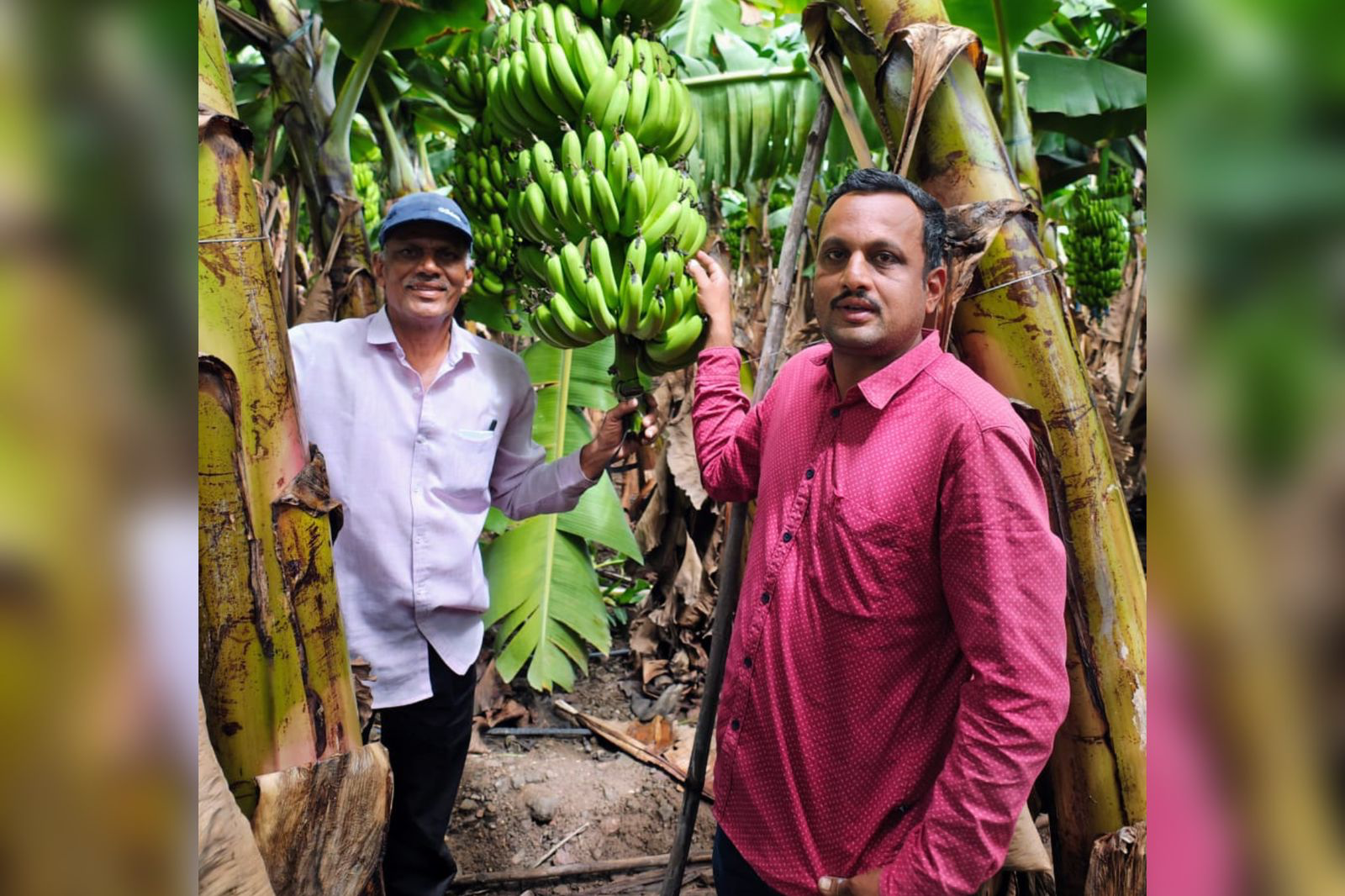Maharashtra Farmer Dheeraj Jagtap Earns ₹40 Lakh from 4-Acre Banana Farm, Highlighting a Shift Towards Export-Driven Agriculture
In an agricultural development that mirrors India’s growing shift towards high-value crop exports, Maharashtra farmer Dheeraj Jagtap has achieved a turnover of approximately ₹40 lakh by cultivating the Parrshva Williams tissue-culture banana variety across four acres. His milestone reflects a wider movement among farmers adopting scientific cultivation methods to meet international quality benchmarks.
Bananas remain one of India’s most cultivated fruit crops, yet small and mid-scale growers often struggle with disease management, size uniformity, and shelf-life — factors that influence access to premium export markets. Jagtap’s transition to a modern, precision-grown variety has been key to overcoming those challenges, allowing his produce to match the specifications demanded in Gulf nations.
Modern Horticulture Practices Drive Stability
Like many growers in the Solapur and Ahmednagar region, Jagtap initially cultivated traditional banana varieties. However, he frequently faced quality-related inconsistencies that affected market price and export grading. His decision to adopt the Parrshva Williams tissue-culture cultivar — developed through collaboration with Israeli specialists — marked a turning point.
Known for its genetic uniformity and strong resilience against diseases like Panama wilt and Sigatoka leaf spot, the variety has helped him maintain consistent yield standards.
Agricultural experts say farmers are increasingly opting for such scientifically propagated plants as a way to improve field productivity and reduce crop-related uncertainty.
Export-Grade Performance and Yield
International buyers demand produce that offers consistent size, durability, and shelf life. According to Jagtap, the Parrshva Williams variety demonstrated notable improvements:
- 30–35 kg average bunch weight
- More than 12 hands per bunch
- Uniform finger size suitable for global packaging standards
- 12–14 days post-harvest shelf life
- Reduced bruising and spoilage during transport
These characteristics have translated into stronger acceptance from exporters supplying Dubai, Oman, and Saudi Arabia, where fruit quality and presentation are closely monitored.
“Earlier, maintaining quality until the market was a challenge. Now, exporters visit the farm directly,” Jagtap shared, noting the increase in demand for his produce.
Increasing Global Recognition for Indian Bananas
Bananas cultivated in India, particularly premium-grade varieties, are gaining attention in Middle Eastern markets due to their taste profile and visual appeal. Exporters report rising interest as improvements in cold-chain logistics and packing infrastructure support longer-distance shipments.
Factors contributing to this growth include:
- Preference for visually uniform and long-shelf-life fruit
- Better packing and ripening systems
- Training support for export-focused farmers
- Expanding procurement networks in rural belts
Jagtap’s success is prompting other farmers in his area to consider diversified banana varieties and modern input practices.
Guidance and Market Linkages Matter
Agricultural specialists caution that high-quality planting material alone cannot guarantee export success. Proper field management, nutrition schedules, and harvest-handling protocols remain essential. Jagtap’s journey has been supported by agronomy guidance, helping him align his practices with export standards.
Local procurement facilities and structured buyer linkages have also made it easier for small farmers to access international markets.
Managing Opportunity with Realistic Expectations
While Jagtap’s experience offers encouragement, experts urge farmers to evaluate factors such as:
- Irrigation availability
- Upfront investment in plant material
- Market fluctuation risks
- Proper grading and packing practices
Nevertheless, with appropriate support, technology-driven horticulture is emerging as a sustainable model for income enhancement in rural India.
A Growing Blueprint for Rural Innovation
From Jalgaon to Nanded and Burhanpur, farmers are increasingly exploring export-friendly banana cultivars. Jagtap’s journey demonstrates how strategic adoption of biotechnology and structured farm management can unlock higher returns even from modest land holdings.
As India continues to boost its agri-export ecosystem through logistics upgrades and farmer training initiatives, success cases like his offer a template for other growers aspiring to move up the value chain.
His four-acre farm in Kedgaon today stands as an example of how innovation at the grassroots can align with global market standards — signalling a promising direction for modern agriculture.
Industry Perspective
Commenting on the development, Rupesh Kothari, associated with the Parrshva Williams initiative, noted:
“The Parrshva Williams variety, developed with our Israeli technology partner for Indian conditions, has groundbreaking properties for export. It enables all farmers to take part in the global agriculture economy and improve their standard of living — which has always been our core objective.”



